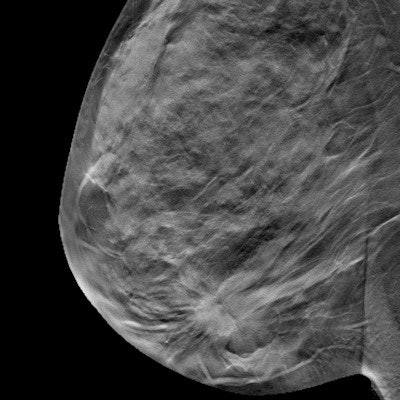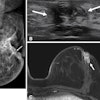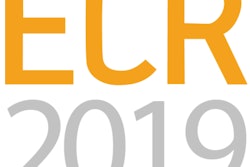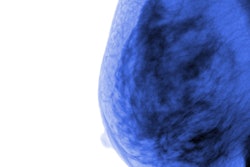
Digital breast tomosynthesis (DBT) improves upon mammography's performance in both screening and diagnostic settings, according to a pair of studies presented at the recent RSNA annual meeting in Chicago.
In the first presentation, Dr. Amir Imanzadeh from Yale University and colleagues shared results from research that explored how DBT compared with digital screening mammography in women between the ages of 40 and 54 -- and whether it could change the justification of screening guidelines.
The researchers analyzed screening mammograms performed in 45,251 women in this age group between August 2008 and April 2017, including all digital screening mammograms performed before DBT was implemented and all DBT exams performed after implementation. The group calculated recall and cancer detection rates and characteristics of screening-detected cancers for the two modalities in three age groups: 40 to 44, 45 to 49, and 50 to 54.
Among all of the women included in the study, 16,938 underwent digital mammography and 28,313 received DBT. Compared with digital mammography, DBT significantly reduced the recall rate across all age groups and increased the cancer detection rate in women between the ages of 45 and 49, the researchers found.
| Performance in screening setting | ||||
| Age of women | Digital mammography recall rate | DBT recall rate | Digital mammography cancer detection rate per 1,000 exams | DBT cancer detection rate per 1,000 exams |
| 40-44 | 17.4% | 12.2% | 2.4 | 3 |
| 45-49 | 14% | 9.1% | 2.3 | 4.4 |
| 50-54 | 11.3% | 8.4% | 5 | 3.8 |
"Improved performance of DBT in screening in women between the ages of 40 and 49 compared to [digital mammography] screening may further justify recommendations for starting screening at a younger age," Imanzadeh concluded.
In another session, Dr. Emily Ambinder of Johns Hopkins Medicine in Baltimore presented results from a study that evaluated DBT's performance in the diagnostic setting. The study included diagnostic mammography exams conducted between July 2013 and June 2017 and categorized into a digital mammography group (4,816) and a DBT group (6,029). Ambinder's team compared the two groups' BI-RADS assessment categories, cancer detection rates, and positive predictive value for biopsy recommendation (PPV2) rates.
| Performance in diagnostic setting | ||
| Digital mammography | DBT | |
| Lesions categorized as BI-RADS 1 or 2 | 71.1% | 73.7% |
| Lesions categorized as BI-RADS 3 | 15.3% | 12.9% |
| Cancer detection rate | 28.9% | 45.4% |
| PPV2 rate | 21.3% | 34% |
In addition to improving clinical outcomes, DBT increases the accuracy of BI-RADS categorization, Ambinder told session attendees.
"Improved interpretation accuracy allows us to find more breast cancers," she said. "And DBT in diagnostic mammography leads to a shift in BI-RADS categorization, which decreases healthcare costs and patient stress and inconvenience."
Clearly, there are benefits to using DBT in the diagnostic setting as well as the screening one, Ambinder concluded.
"More women can return to [a screening protocol], fewer women require short-term follow-up, and cancer detection and PPV2 rates improve," she said.




















